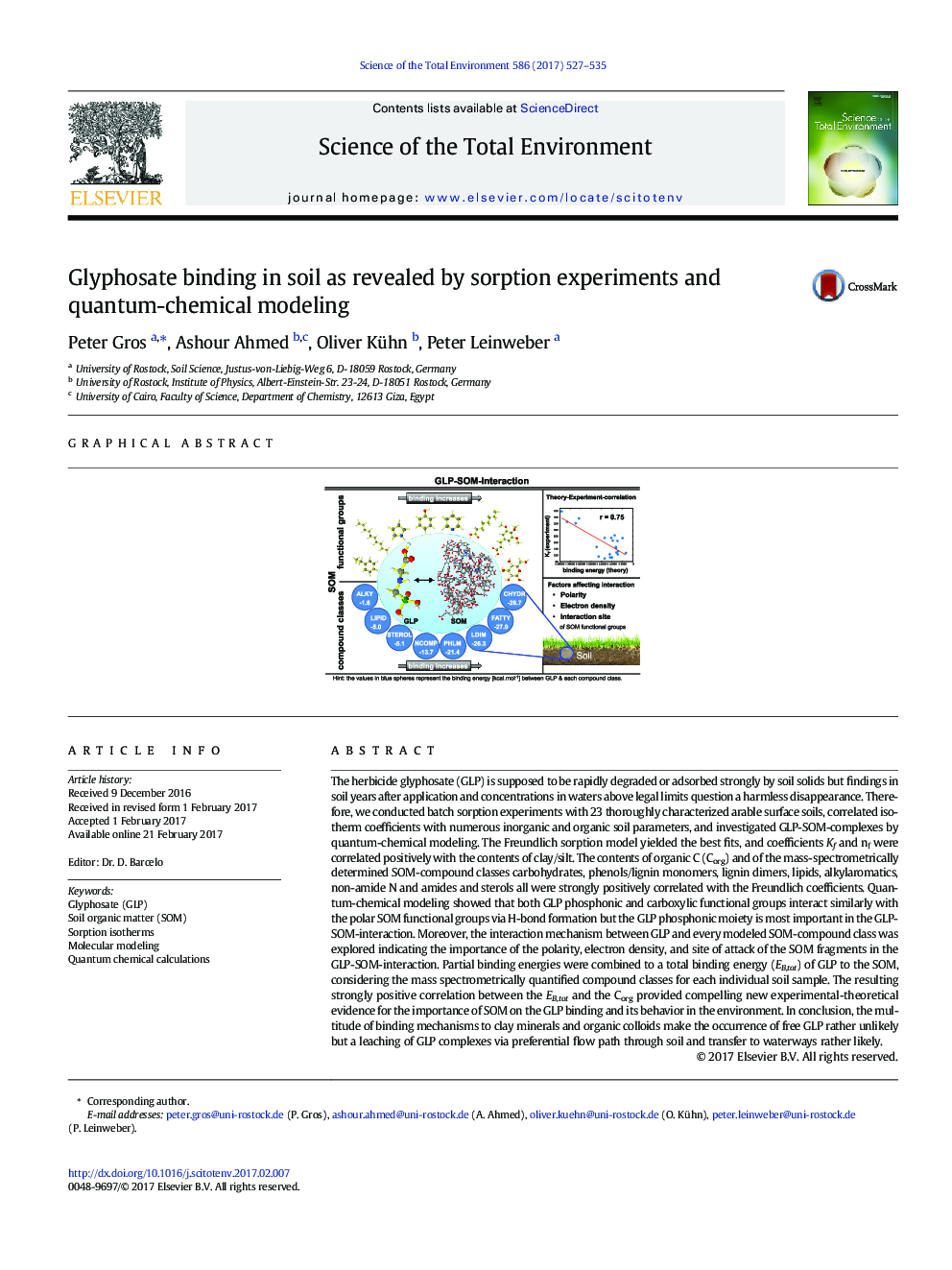| کد مقاله | کد نشریه | سال انتشار | مقاله انگلیسی | نسخه تمام متن |
|---|---|---|---|---|
| 5751149 | 1619707 | 2017 | 9 صفحه PDF | دانلود رایگان |
The herbicide glyphosate (GLP) is supposed to be rapidly degraded or adsorbed strongly by soil solids but findings in soil years after application and concentrations in waters above legal limits question a harmless disappearance. Therefore, we conducted batch sorption experiments with 23 thoroughly characterized arable surface soils, correlated isotherm coefficients with numerous inorganic and organic soil parameters, and investigated GLP-SOM-complexes by quantum-chemical modeling. The Freundlich sorption model yielded the best fits, and coefficients Kf and nf were correlated positively with the contents of clay/silt. The contents of organic C (Corg) and of the mass-spectrometrically determined SOM-compound classes carbohydrates, phenols/lignin monomers, lignin dimers, lipids, alkylaromatics, non-amide N and amides and sterols all were strongly positively correlated with the Freundlich coefficients. Quantum-chemical modeling showed that both GLP phosphonic and carboxylic functional groups interact similarly with the polar SOM functional groups via H-bond formation but the GLP phosphonic moiety is most important in the GLP-SOM-interaction. Moreover, the interaction mechanism between GLP and every modeled SOM-compound class was explored indicating the importance of the polarity, electron density, and site of attack of the SOM fragments in the GLP-SOM-interaction. Partial binding energies were combined to a total binding energy (EB,tot) of GLP to the SOM, considering the mass spectrometrically quantified compound classes for each individual soil sample. The resulting strongly positive correlation between the EB,tot and the Corg provided compelling new experimental-theoretical evidence for the importance of SOM on the GLP binding and its behavior in the environment. In conclusion, the multitude of binding mechanisms to clay minerals and organic colloids make the occurrence of free GLP rather unlikely but a leaching of GLP complexes via preferential flow path through soil and transfer to waterways rather likely.
346
Journal: Science of The Total Environment - Volume 586, 15 May 2017, Pages 527-535
